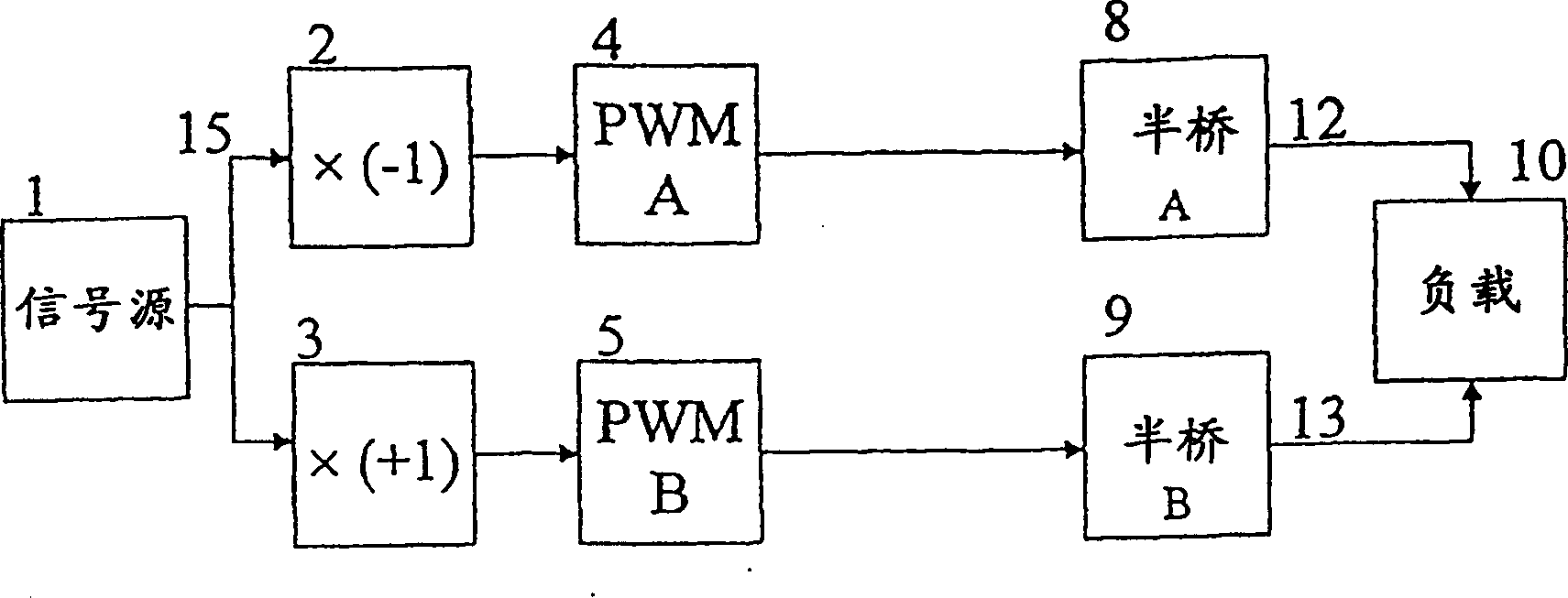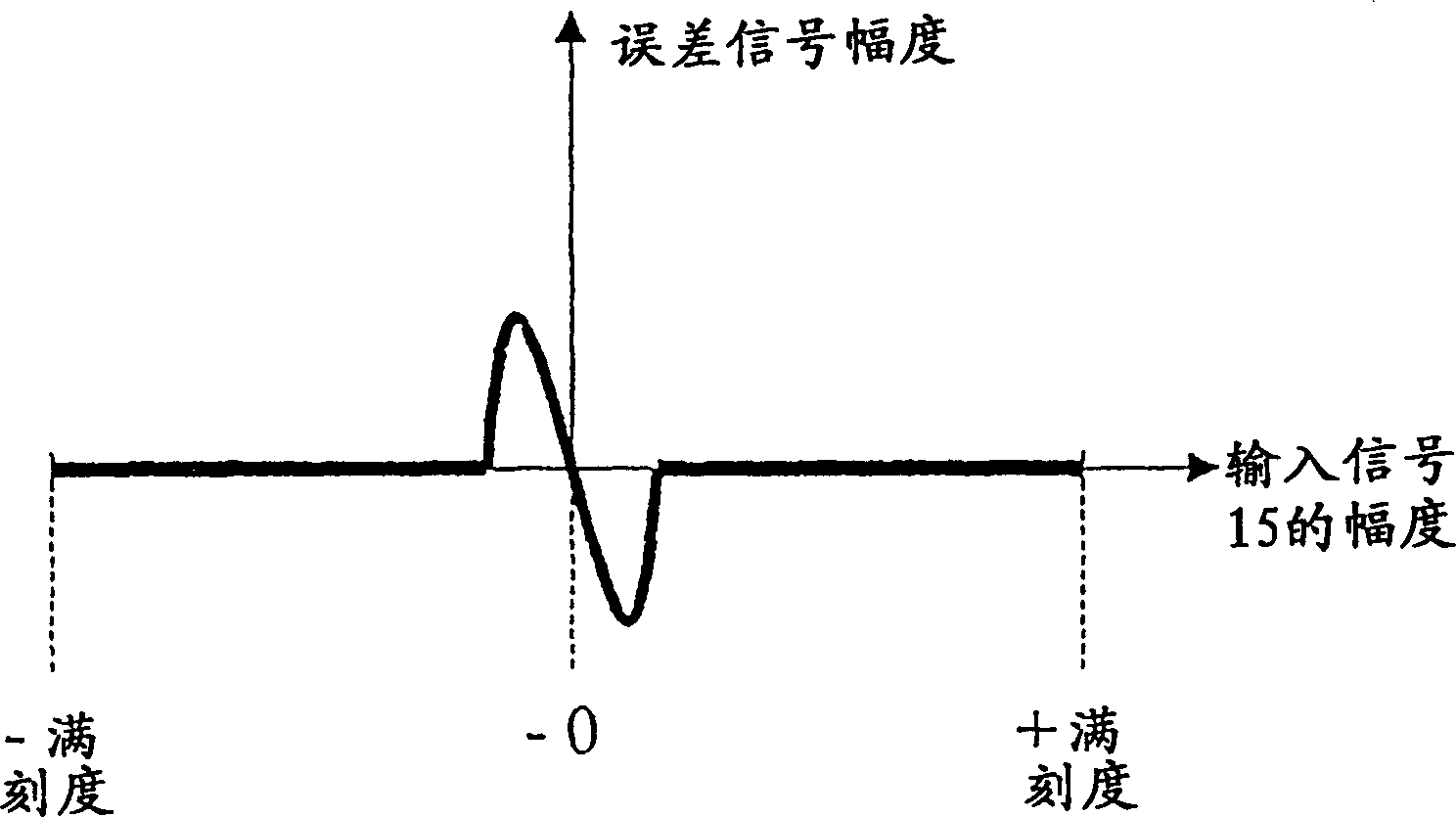Method of attenuating zero crossing distortion and noise in amplifier, and amplifier
An amplifier and noise technology, applied in the direction of improving amplifiers to reduce noise effects, improving amplifiers to reduce nonlinear distortion, amplifiers, etc., can solve problems such as low complexity
- Summary
- Abstract
- Description
- Claims
- Application Information
AI Technical Summary
Problems solved by technology
Method used
Image
Examples
Embodiment Construction
[0034] exist figure 1 In , reference 1 denotes an audio signal generator generating an audio signal 15, while reference 2 and reference 3 denote an inverted block and a non-inverted block, respectively. The inverted and non-inverted signals are pulse width modulated at digital or analog pulse width modulators 4 and 5 in a known manner.
[0035] The signal generated in the pulse width modulator whose output signal is used to control the half bridges (switch banks) 8 and 9. figure 1 The system in works in BD class operation. The pulse-width-modulated power signal, which for example describes an audio signal represented by high-frequency pulses, is demodulated and supplied to a load, indicated here by reference 10 .
[0036] figure 2 It is schematically shown how the pulse width modulation in the pulse width modulators 4 and 5 arises as a function of the signal with non-inverted and inverted signal parts, respectively. Note that the pulse edges of the two outputs 12 and 13 o...
PUM
 Login to View More
Login to View More Abstract
Description
Claims
Application Information
 Login to View More
Login to View More - R&D
- Intellectual Property
- Life Sciences
- Materials
- Tech Scout
- Unparalleled Data Quality
- Higher Quality Content
- 60% Fewer Hallucinations
Browse by: Latest US Patents, China's latest patents, Technical Efficacy Thesaurus, Application Domain, Technology Topic, Popular Technical Reports.
© 2025 PatSnap. All rights reserved.Legal|Privacy policy|Modern Slavery Act Transparency Statement|Sitemap|About US| Contact US: help@patsnap.com



